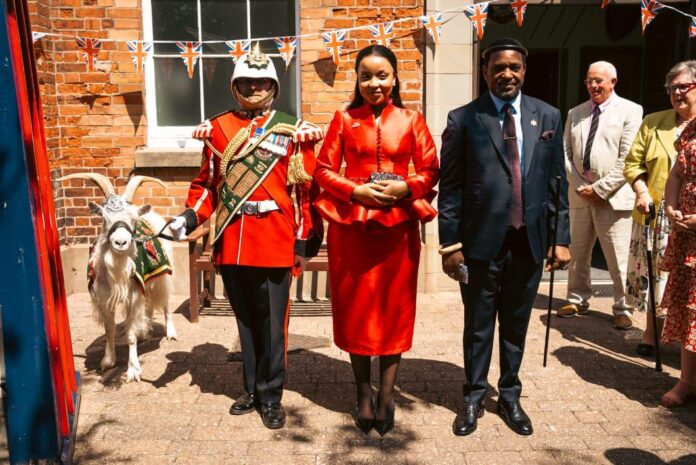AmaZulu King Misuzulu KaZwelithini has followed in the footsteps of his late father and mother by visiting the Royal Welsh Regimental Museum in Brecon, which houses the history of the historic 1879 battle of Isandlwana, where the Zulu army of King Cetshwayo inflicted a defeat on the imperial British army.
King Misuzulu visited the museum over the weekend; shortly after, the African Achievers Awards Committee honoured him for distinguished leadership, cultural stewardship, and dedication to the advancement of African heritage and unity.
The honour took place at the UK House of Parliament in London.
The first Zulu king to visit the museum was King Cetshwayo shortly after the Battle of Isandlwana. The late King Goodwill Zwelithini and Queen Mantfombi Dlamini-Zulu revived the visit by making it an annual event.
King Misuzulu’s new wife, Queen Sihle KaMdhluli, accompanied him on Saturday’s visit.
The king’s office said the visit was an act of historical remembrance and cultural diplomacy between the Zulu and British kingdoms.
“The visit marked a profound retracing of the royal footsteps of King Cetshwayo kaMpande, the great-grandfather of His Majesty, who visited the UK in 1882 after the Anglo-Zulu War.
“This royal engagement also honoured the legacy of His Majesty’s late parents — King Goodwill Zwelithini kaBhekuzulu and Queen Mantfombi Dlamini Zulu — both of whom previously visited Wales to commemorate the legacy of King Cetshwayo and to strengthen the spiritual and diplomatic ties between the Zulu kingdom and the British crown,” the office said.
Royal Welsh Wall Plaque
It added that at the museum, King Misuzulu and Queen Sihle were received with full ceremonial honours.
“Amongst the highlights of the day was His Majesty’s formal presentation of a traditional Zulu war shield — an ancestral symbol of peace and reconciliation.
“This act mirrored a similar gesture made by his late father, King Zwelithini, during his visits to the United Kingdom.
“The shield served as a diplomatic gift symbolising the continuation of peace between the Zulu kingdom and the British crown, first brokered by King Cetshwayo kaMpande and Queen Victoria following King Cetshwayo’s captivity and subsequent visit to Britain in the 1880s.
“In a moment of exceptional honour and heritage recognition, His Majesty was presented with the prestigious Royal Welsh Wall Plaque [Crest Shield] and the Royal Welsh Regimental Tie.
“The Crest Shield, bearing the emblem of the Royal Welsh Regiment, symbolises military honour and enduring mutual respect.”
Military continuity and pride
Moreover, the king’s office said the regimental tie, which is rich in ceremonial traditions, is typically reserved for distinguished individuals who have demonstrated commitment to peace, service, or honourable relations with the regiment.
“These two items are considered among the highest tokens of respect from the Royal Welsh to a foreign royal figure.
“A notable moment of the visit was His Majesty’s encounter with the Royal Welsh regimental goat — a live ceremonial mascot whose tradition dates back to the 18th century.
“Adorned in full regalia, the goat represents military continuity and pride, and its presence during royal visits underscores deep historical significance.
“The symbolism of the Zulu king meeting the living mascot of the very regiment that clashed with Zulu warriors at Isandlwana, now in an atmosphere of brotherhood, marked a striking image of reconciliation.”



